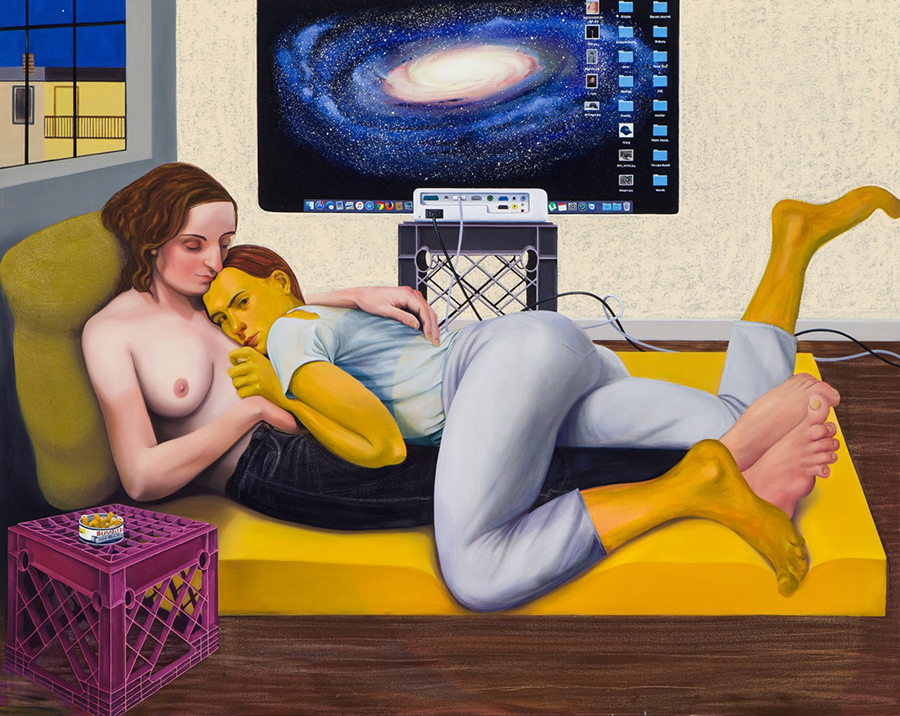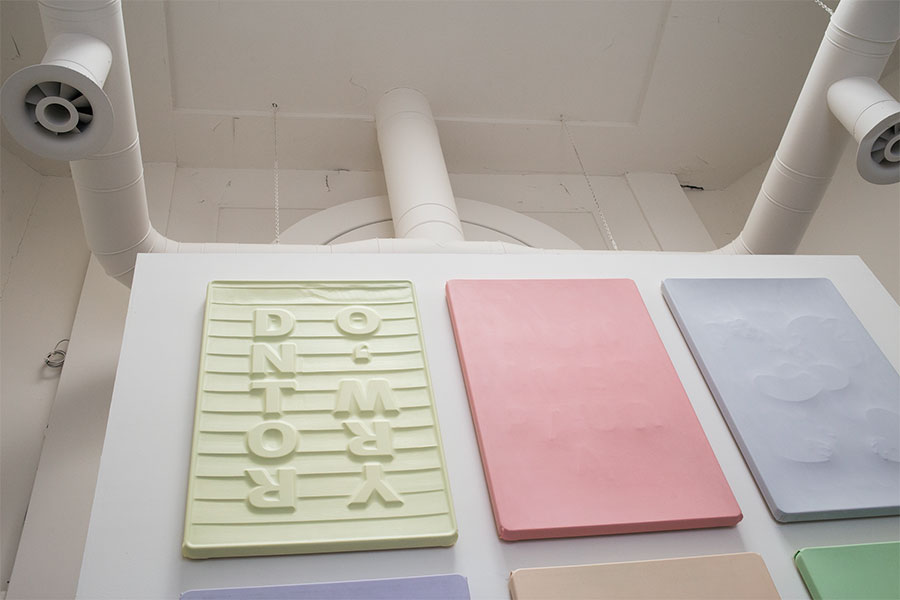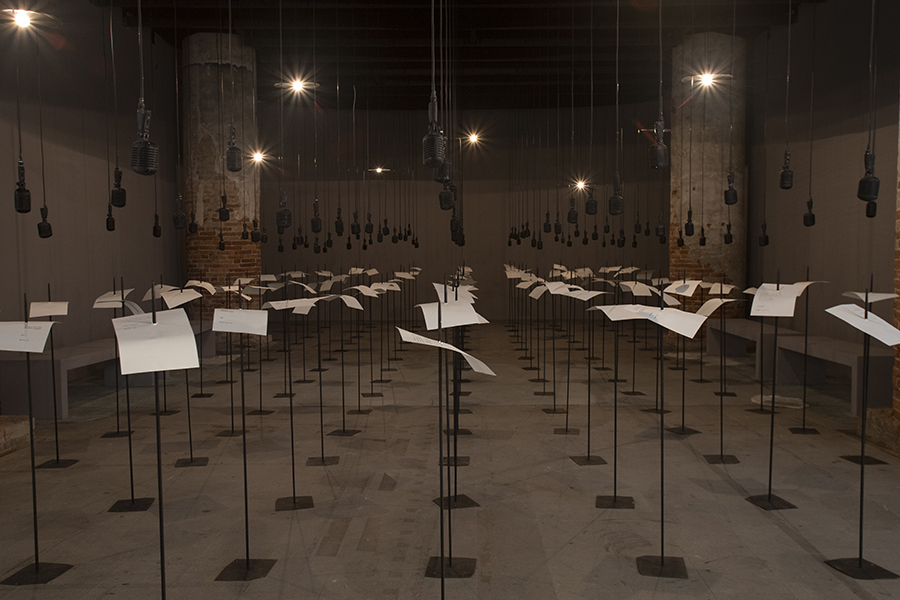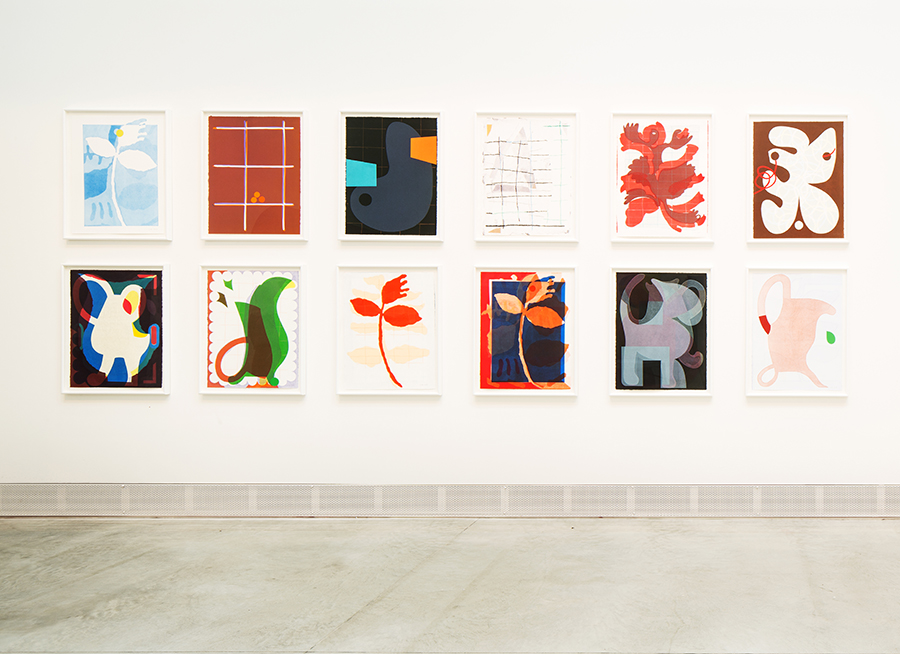58th Venice Biennale Review: Brilliance and Bluster
In Ralph Rugoff’s exhibition ‘May You Live in Interesting Times’, disorientation is the order of the day
In Ralph Rugoff’s exhibition ‘May You Live in Interesting Times’, disorientation is the order of the day

OK, let’s get that title out of the way. A fictitious Chinese curse misquoted by a British statesman, ‘may you live in interesting times’ wasn’t the benign greeting you might assume it to be, but was, rather, a way of wishing the recipient the opposite of peace. As the title of a mega-exhibition, its suggestion of misquotation and ambiguity is both evasive and apt: Ralph Rugoff’s curation is a blend of brilliance and bluster, subtlety and misfires.

Facts: ‘May You Live in Interesting Times’ includes mainly new or newish work by 79 artists and collectives from 38 countries (compared to 120 artists from 51 countries in 2017) and is staged across two venues: the Central Pavilion in the Giardini of the Biennale and the Arsenale, a place so big they used to build ships in it. Oh – it’s also the first time in the history of the Biennale that half of the artists included in the show are women. Hallelujah! (Although how sad / enraging that, in this day and age, it’s still something to remark upon.) Rugoff has made clear, a little confusingly, that, despite the complexities of the aforementioned ‘interesting’, and the fact that the big issues du jour – from climate change to nationalism, the evils of racism, the disparity of wealth and the ‘pervasive impact’ of social media – dominate the imaginations of many of the artists in the show, ‘art is more than a document of its times’ and, as such, ‘there is no over-arching narrative or thematic umbrella’. This is a mixed blessing: at best, it allows ideas to sing in a space of their own making; at worst, the songs are cacophonous.

Rugoff divided the show into ‘Proposition A’, in the Arsenale, and ‘Proposition B’, in the Central Pavilion; each venue highlights different aspects of an artist’s practice. (Generally speaking, the work in the Arsenale is, as if echoing the architecture, on a bigger scale.) Rugoff has declared that he was influenced by Umberto Eco’s book The Open Work (1962), which, he says, ‘drew attention to art’s capacity to inspire novel ways of seeing and behaving, which he linked to its relentless testing and questioning of cultural standards and norms’. Overall, in fact, the influence of new technologies impacts, in various ways, all the works shown here.
The Central Pavilion exhibition opens with an ending, of sorts. Antoine Catala’s It’s Over (2019) is a large, silicone-covered, pastel-coloured wall work that comprises nine suction panels; when the air is pumped out, a platitudinous phrase appears in relief (and yes, that word is ambiguous): ‘Everything is OK’, Hey Relax’ or ‘Don’t Worry’. I did, though. I thought of F. Scott Fitzgerald’s famous maxim that ‘the test of a first-rate intelligence is the ability to hold two opposed ideas in mind at the same time and still retain the ability to function’ (‘The Crack-Up’, 1936).

Disorientation is the order of the day. I walked down a corridor so dazzlingly white that I felt for a wall to steady myself (Ryoji Ikeda, Spectra III, 2008/19). Eyes and sanity are soothed in Haris Epaminonda’s mesmerizing Chimera (2019), a Super-8 film that evokes the hybrid beast of its title by drifting to a sand dune via the stripes of a herd of abstracted zebras, faraway faces in classical paintings, dancing girls and diamonds. At one point, the artist’s camera focuses on preserved bodies from Pompeii; heartrending figures eternally frozen at their moment of death. The metaphor of the fragmented body is something of a thread that weaves throughout the show: in Yu Ji’s oddly tender cement studies, ‘Flesh in Stone’ (2012–18); in Maria Loboda’s deadpan photographs of historic objects being cleaned (Zero Dynasty II and V, 2017); in Cameron Jamie’s hauntingly visceral ceramic masks (Untitled, 2014–15); and in Otobong Nkanga’s delicate acrylic paintings that depict the intermingling of human parts with a tree, a rope, a cactus (Extraction, 2019).
Despite the newness of most of the work on show there’s a strong sense that everything is a little ruined – both literally and symbolically – even though, as Ed Atkins makes clear in his deeply affecting vision of horror and hope, Old Food (2018): ‘There is no old in the digital.’ A quote by Mike Kelley hums at the heart of Atkins’s installation in the Arsenale, which comprises digital videos, opera costumes and wall texts: ‘To become aware of these particulars one must imagine oneself unwhole, cut into parts, deformed, undead.’ He also cites Marcel Proust: ‘The need to be loved more precisely, the need to be caressed and spoiled, much more than the need to be admired.’ (‘Proust Questionnaire’, 1890). Atkins’s ten ominous and absurd drawings of a hand holding a tarantula, his face superimposed onto the spider’s abdomen (Bloom, 2018), pop up at odd moments in the Central Pavilion: quiet, funny reminders of how alien we can be, even to ourselves.

There’s a lot of strong painting in the show: Jill Mulleady’s homage to Edvard Munch; Michael Armitage’s response to the chaos of the Kenyan general election of 2017; Njideka Akunyili Crosby’s new portraits; George Condo and Henry Taylor’s mining of personal and political histories. A highlight is Nicole Eisenman’s cosmic fusion of the everyday and eternity in five large new paintings: the longer you look, the more you see. They’re displayed in one of the Central Pavilion’s strongest rooms, alongside Jean-Luc Moulène’s fantastically inventive sculptures – a terracotta Madonna without hands (Domatrice, 2019), a bronze head that is mostly a hole (Masque (Marc Gilbert) Paris, 2017), among others – and Rosemarie Trockel’s riddle of an installation, Group of Articles (2019). It’s an endlessly rich dialogue. Nothing here, despite its confidence, is adamant and, as such, there’s room to breathe and think. If only it were always thus. In the conversation set up in another room between a group of brilliant artists – Nairy Baghramian, Condo, Jimmie Durham, Julie Mehretu and Taylor – it was hard for anyone to get a word in. Similarly, the logic of placing Carol Bove sculptures in close proximity to both the paintings of Akunyili Crosby and Avery Singer and Anthony Hernandez’s photographs was lost on me.

We live in a bombastic age: perhaps the best way to be heard is, conversely, to lower your voice. To my mind, some of the most rewarding work in this enormous exhibition was the quietest. Suki Seokyeong Kang’s wondrous ‘Grandmother Towers’ (2013–19), for instance: sculptural portraits of the artist’s grandmother that draw on her Korean heritage, made from weavings and materials so fragile they could blow away. Ulrike Müller’s joyful tapestries, enamel paintings and monotypes that mingle abstraction with figuration are like a long cool drink in a pleasant bar you’ve escaped to after being shouted at. As always, humour has a way of focusing the mind with the lightest of touches. Lara Favaretto’s Thinking Head (2019) is a wonderfully futile attempt to illustrate human complexity with objects. Self-doubt? Cannon balls. Identity? A large black box. At the other end of the scale, Sun Yuan and Peng Yu’s gigantic Can’t Help Myself (2016) – a frenetic, industrial robot in a glass cage that endlessly scrapes a pool of blood-red liquid – is a one-liner I couldn’t get away from fast enough.
At times, attempts to reflect the cacophony of the world back on itself perpetuated the very thing the work seemed to be critiquing: Christian Marclay’s frenetic video collage 48 War Movies (2019) is like a peace quilt gone mad while Ikeda’s attempt to compress the entire universe into a single video, data-verse 1 (2019), left me sea-sick and none the wiser. Conversely, one of the most affecting, timely rooms is appropriately dark: Shilpa Gupta’s elegiac multi-channel sound installation, For, In Your Tongue I Cannot Fit (2017–18), commemorates the words of 100 poets, from the seventh century until recent times, who were jailed or executed for their political beliefs. (The title is a line from a poem by the mystical 14th-century Azerbaijani poet Seyid İmadeddin Nesimi, who was flayed to death for speaking his mind.) 100 microphones are suspended above 100 metal spikes, each of which pierces a piece of paper inscribed with a fragment of a poem. The microphones function as speakers, broadcasting poems in Arabic, Azeri, English, Hindi, Russian and Spanish. In a recent interview, Gupta said that she created the installation in order to highlight ‘the fragility and vulnerability of our right to freedom of expression today’.

The horrors of racism recur like a nightmare that is all too real: unforgettably, in Arthur Jafa’s new film The White Album (2018), which juxtaposes clips of white supremacism with affectionate portraits of friends, and more obliquely in Korakrit Arunanondchai and Alex Gvojic’s study of a community of humans and non-humans, No history in a room filled with people with funny names 5 (2019). Kahlil Joseph’s BLKNWS (2018–ongoing) is a mesmerizing two-channel digital collage that moves between interviews, news feeds, fragments of films and television series. Projected onto a large print of black soldiers, the work leaps backwards then forwards then back again in time. At one point, the poet Fred Moten declares: ‘You don’t ever get escaped. Like, “I escaped!” No! And what that means is that what you’re escaping from is always after you. It’s always on you.’ Interesting times, indeed.
Main image: Lara Favaretto, Thinking Head, 2018, mixed media. Courtesy: La Biennale di Venezia; photograph: Francesco Galli






















